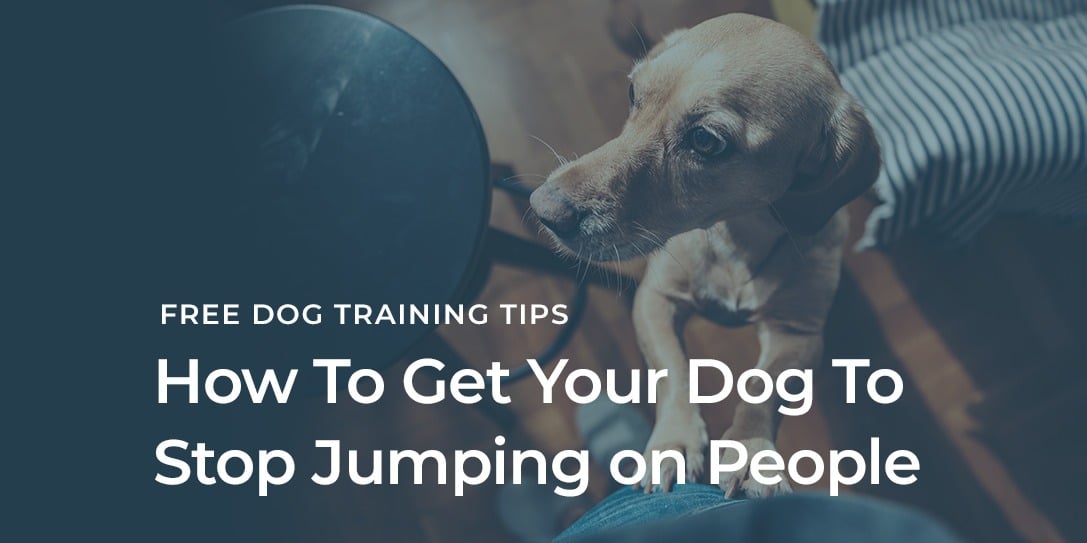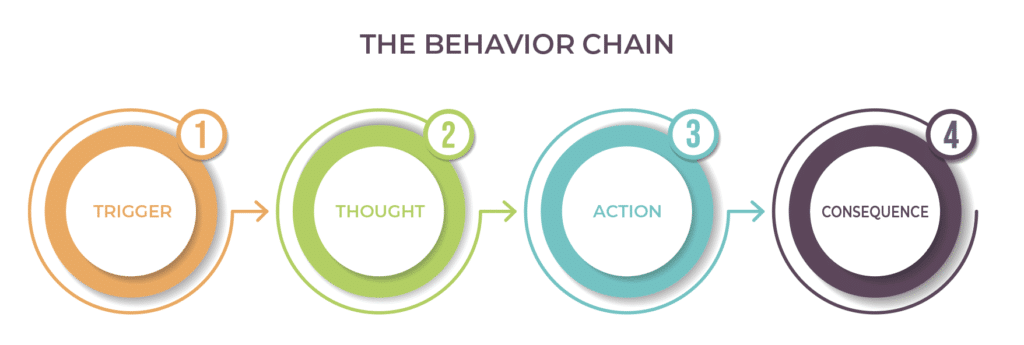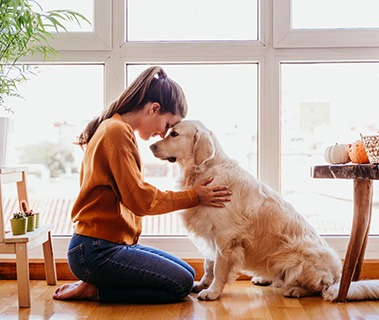
Dogs are naturally social creatures so, when they get visitors, they can’t help but jump up and make them feel welcome. It’s all in good spirits but jumping up on people can be both annoying and unsafe. Dogs of all sizes have been known to scratch, bruise, and knock over people because they haven’t been trained not to jump up. One of the top training questions we hear at Dog Gone Amazing is “how do I get my dog to stop jumping on people?”
Here are 3 key ways to help your dog learn to have better control and stop jumping on people.
How Do I Get My Dog To Stop Jumping On People?
1. STOP REWARDING THE BEHAVIOR
Yep, you read that right. Without realizing it, many owners (and their visitors) are actually rewarding their dog for jumping up on them. Your dog jumps up because they are excited to see you and you probably feel the same. The problem is, if your dog jumps up and you respond by showing them affection, you are rewarding them for jumping up.
It’s actually pretty simple when you understand the behavior chain. A behavior chain is a sequence of behaviors that happen where each stage is a response to the previous step. Here’s what it looks like:

In the case of jumping up on people, here’s an example of the behavior chain at work:
The Trigger: Someone arrives at the door
The Thought: I’m excited to see them, I want to get closer!
The Action: Jumping up on person
The Consequence: Person pets me and talks in that sweet baby voice. I feel happy.

If in the “consequence” stage of the behavior chain, your dog is being rewarded for their behavior with affection or anything other than a negative consequence, they are being rewarded for jumping up. In fact, you’re actually building a behavior pattern that encourages them to continue jumping up. For your dog, jumping up means getting affection.
So, the first step is to stop rewarding the behavior in any way. You can do that by saying “NO” or “OFF” and motioning them down or gently bringing them back down to the floor.
Jumping up needs to be an off-limits behavior at all times. You can eventually graduate to a command that asks them to jump up for a visit, but for now, it’s best not to create any unnecessary confusion. Stick to the rules – no jumping up.
2. ADDRESS THE TRIGGER
So you learned to stop rewarding the behavior, and now you’re asking “But, what if that habit is already well established? How do I get my dog to stop jumping on people?”
Using the behavior chain reference again, another approach you can take to stop your dog from jumping up is to address it at the trigger stage.

A lot of owners make the mistake of giving their dog a negative consequence AFTER the unwanted behavior has already happened. The problem with this is that your dog doesn’t understand the connection between what they did and why you’re upset. So, they jump up, you get upset and tell them “no” and then they wonder “what’s wrong with you?!”
In the example above, the “Trigger” is anything that causes the thought “I want to jump up.” Pay attention to your dog. When are they doing this behavior? It’s likely happening when someone comes to the door or when you get home from work. That’s the trigger.
The best way to train around the trigger is to help your dog practice control when the trigger happens. Try putting your dog’s leash on and then practicing the trigger with a friend or family member. Keep your dog on leash and practice the “off” command even before they hear the knock at the door. This will help address the behavior at the trigger level and associate “off” with the next chain of events.
Correct their behavior as they move through their typical behavior chain keeping the consistent “off” command throughout and keeping them off the person or gently pulling them down if they try to jump. Try practicing this repeatedly so that they start associating the “off” command with the whole event from trigger to consequence. They’ll start to make the connection that this series of behaviors needs to change and they need to do something different.
 3. Reward “Four On The Floor”
3. Reward “Four On The Floor”
Once you have worked through the “off” command throughout the behavior chain, and you have provided a negative consequence for jumping up, you can use the behavior chain again to create a positive habit. Let’s call the positive habit “four on the floor”.
In this instance you can use treats for positive reinforcement during the “consequence” stage to reward a positive behavior chain of events. The goal here is to prevent your dog from jumping up by rewarding them before they even think about leaving the ground.
Make sure your dog is on a leash, then try this:
- Have someone approach your dog
- Before they get to your dog, toss some treats on the floor
- While your dog is focused on their treats, have the person pet and greet them
- Before your dog is finished, ask the person to back away
- Repeat this several times but extend the greeting time with each round, continuing to toss treats on the floor. Reinforce all four on the floor with praise like “yes” or “good boy”
- Once your dog can keep all four feet on the ground. Try allowing them to greet the person BEFORE you put treats on the ground.
- As they begin to understand and show they can consistently stay down, you can start offering fewer and fewer treats, but continue to use verbal praise
What if I don’t have the time to train my dog myself?
Remember, all dog training takes a level of practice and commitment from owners. If you are trying to get your dog to stop jumping up on people, you need to work with them consistently and for however long they need in order to get it right.
However, we know life gets busy and not everyone has the time they need to help their dogs learn new training skills like this. That’s where we can help.
Whether you work with us through a series of private sessions or enroll your dog in a board and train program, we can work with your dog on these basic commands and MORE. This way, when you complete your program, your dog will have the basic commands and skills they need to live a dog gone amazing life. And, you can spend your time enjoying walks, hikes, and road trips instead of spending hours trying to teach your dog new commands.
